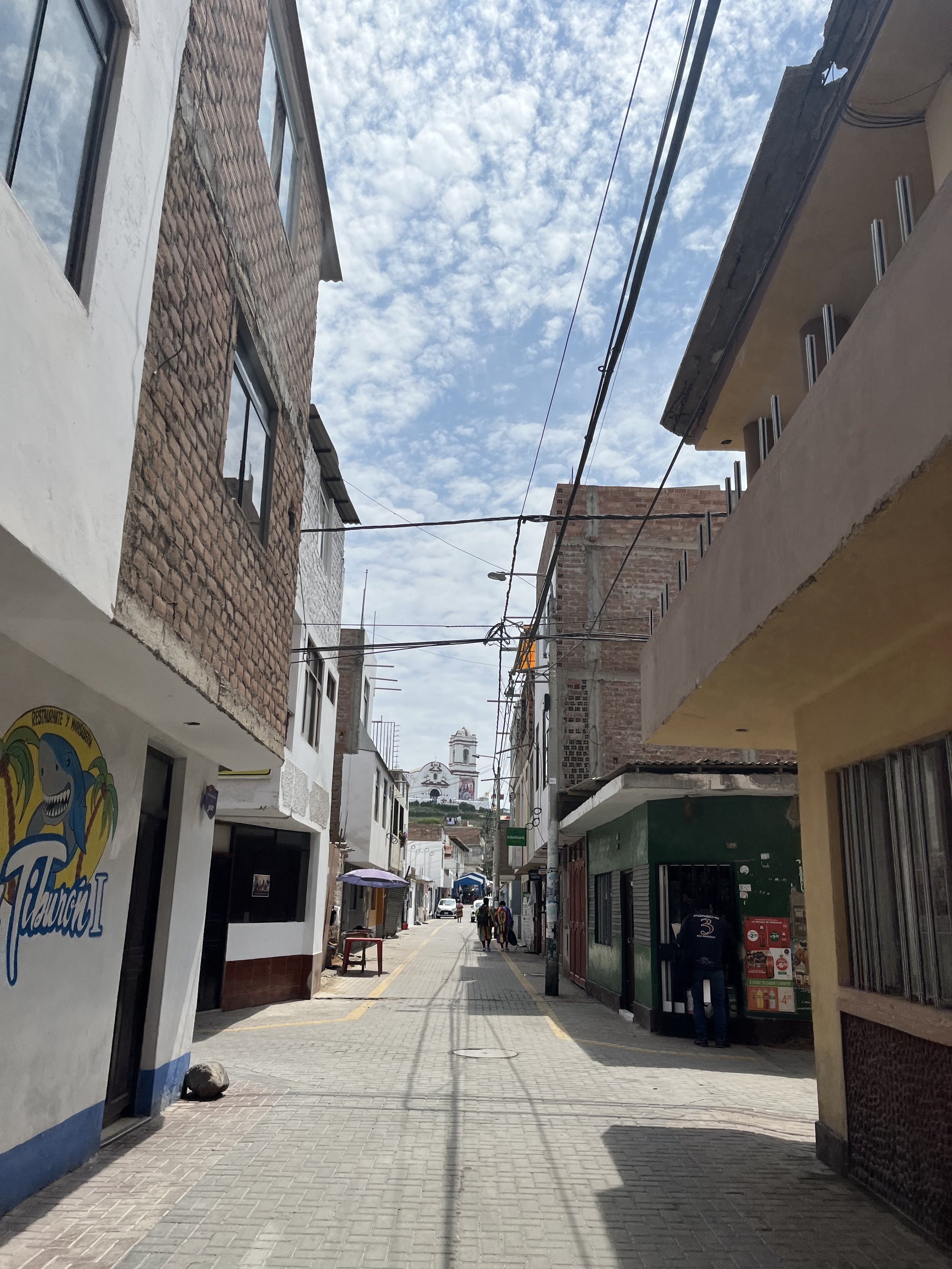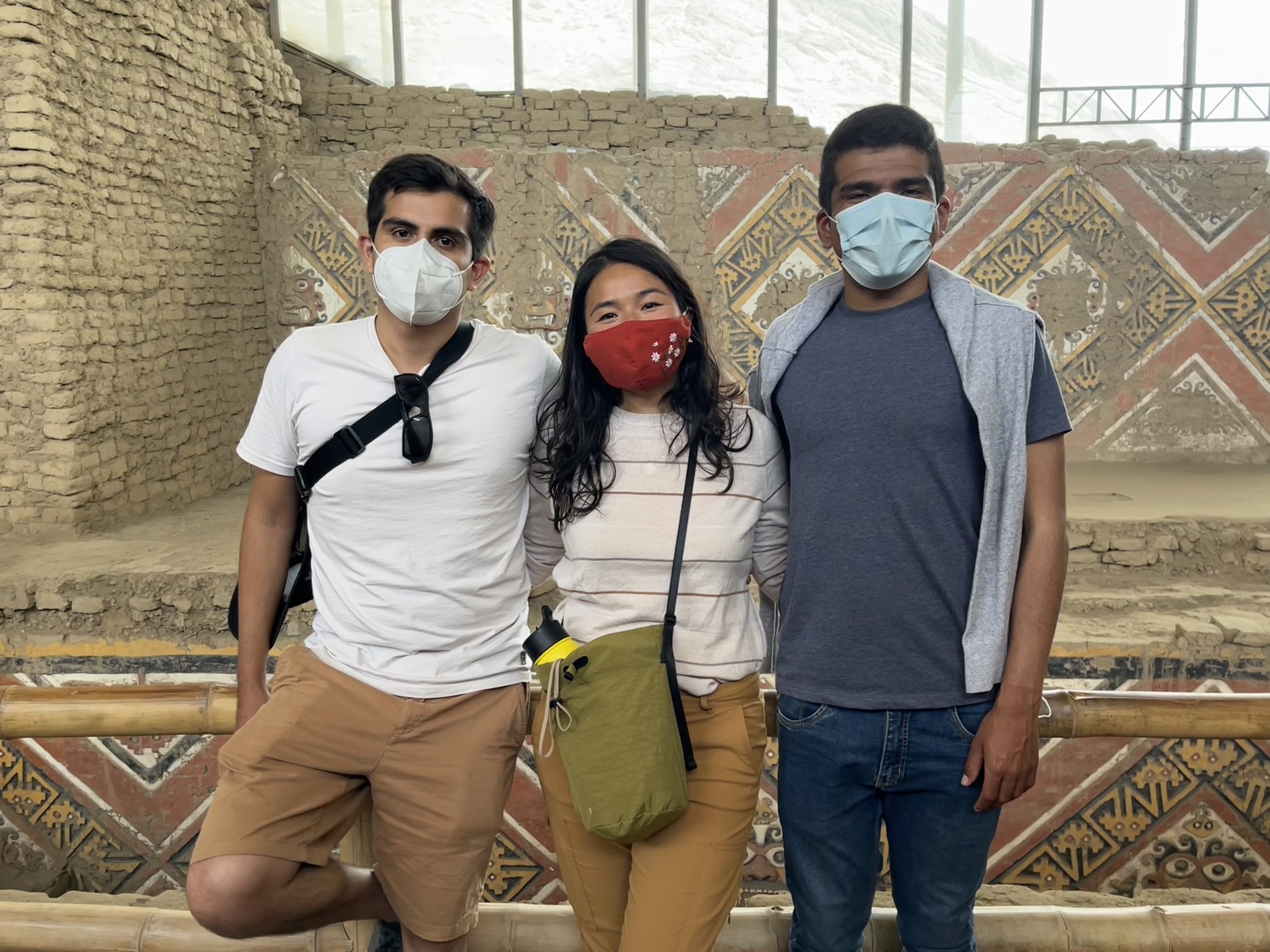After my ayahuasca experience at Mai Niti, my next stop was Huanchaco: where I went to surf and spend some time decompressing my ayahuasca experience.
Although I’m not very good at surfing, it’s the first sport I can genuinely say I enjoy. Its contradictory nature makes it feel new and alive every time: waiting for a wave can be meditative, but it’s the adrenaline rush when you finally catch wave that gets you addicted; you have to be constantly observing and adjusting to the waves but there’s also an inevitable surrender to the ocean; you can feel powerful when you leverage the momentum of the wave but wipe out in the next; it’s as restorative as it is rejuvenating, and beautiful at sunset as it is at sunrise. If I’m always trying to find a balance between who I am and who I want to become, surfing seems to be the funnest way of practicing the pull and push between what is and what could be.
Peru boasts a few surfing destinations like Chicama, the longest left wave in the world, or the classic party beach town of Mancora, but Huanchaco promised to be a quieter surf town with historical ruins to explore for when one was done surfing for the day.
Huanchaco is described as a beach city, but it still feels like a small town. Partly because the tourism scene is still underdeveloped, but also the constant state of construction, the lack bustling commercial streets (there’s no supermarket or international chain stores), and the stronghold of cultural traditions that live on in Huanchaco.
Sand in every crevice and corner.
Huanchaco is famous for its caballitos de tortas (reed), which literally translates into little horses of tortas, because fisherman sit on them as if they were horses. These caballitos trace back to pre-Incan times to the Chimu civilization.
The cabellitos de tortas on the left.
Everything from the inheritance of the fields where the reeds grow to the construction of these caballito is still governed by tradition and legacy. These caballitos still line the beaches and populate the beaches of Huanchaco; fishermen don’t use any other boats.
The fields of tortas, which can only be passed down within the family.
After growing for nine months, the reeds are cut and laid out to dry.
It’s a sleepy town, with cobblestones and a rhythm of life set by the pace of the waves. Sand is everywhere on the streets, and seafood, of course, is a given here.
To be honest, I was a little nervous to leave the comforts of Mai Niti, after all this would mark my real foray into solo backpacking life. No set schedules, no ready meals, and no restrictions. With freedom comes a heavy responsibility to make use of it.
The first day here, marked by a airport taxi that ripped me off to the city center, a nervewrecking navigation to a mobile operator store without data, a moment worried I wouldn’t be able to unlock my phone, and extremely confusing directions the hostel, didn’t bode well for me. However, time wore away the initial anxiety as the ocean waves do to sandcastles.
I filled my days with Spanish and surfing lessons, and recovered from a persistent stomachache that could’ve been from trying to go ham after the restrictive ayahuasca diet, or bad food itself.
Outside of Chan Chan.
As for the historic ruins, while Chan Chan is often touted as the must see destination, the actual experience is underwhelming because so little of it is preserved. The nearby Huacas del Sol y Luna was much more impressive, includes a museum and tour guide in admission (5S vs Chan Chan’s 50s for a tour guide), and much more well preserved so there’s more to enjoy. With the scale and complexity the Huacas, the presence of life and the weight of time is undeniable. Just like grand natural vistas, great historical feats remind you how small and inconsequential you are- in the best way.
They build pyramids within pyramids, with every successive generation of pyramids being more elaborate and decorative.
Seeing I was traveling on my own, Ricardo and Diego adopted me and we became fast friends. You'll see them in future posts!
All in all, this was a week where I felt a bit quiet, withdrawn and pensive. I was still trying to make sense of my ayahuasca experience, dealing with the nervous flutters of the first week solo, and feeling physically tired. Although everyone was friendly, and the town was pleasant, the departure from it was easy and without much fuss.
I was ready for something that was more of my taste: the mountains.
Despite warnings from travel books of it being rainy season and a bleak weather forecast, my next stop was Huaraz.
One last look at Trujillo, the next big city where there were connections to Huaraz.











